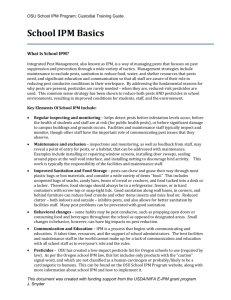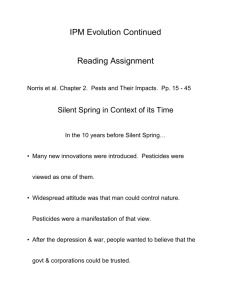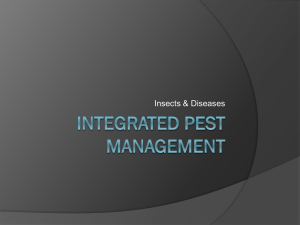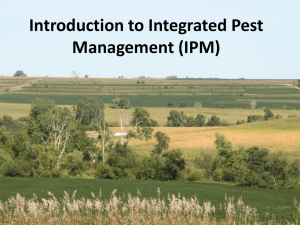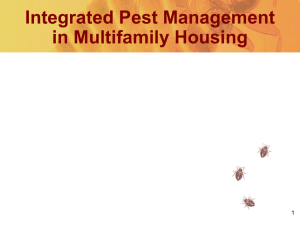here - AASA
advertisement
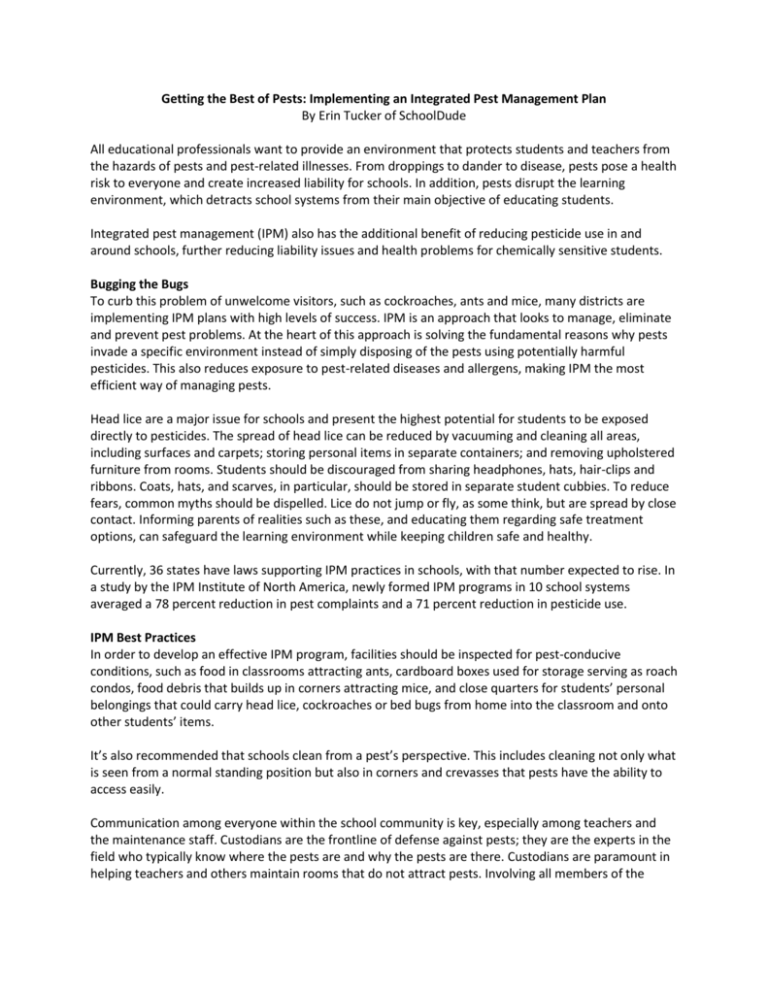
Getting the Best of Pests: Implementing an Integrated Pest Management Plan By Erin Tucker of SchoolDude All educational professionals want to provide an environment that protects students and teachers from the hazards of pests and pest-related illnesses. From droppings to dander to disease, pests pose a health risk to everyone and create increased liability for schools. In addition, pests disrupt the learning environment, which detracts school systems from their main objective of educating students. Integrated pest management (IPM) also has the additional benefit of reducing pesticide use in and around schools, further reducing liability issues and health problems for chemically sensitive students. Bugging the Bugs To curb this problem of unwelcome visitors, such as cockroaches, ants and mice, many districts are implementing IPM plans with high levels of success. IPM is an approach that looks to manage, eliminate and prevent pest problems. At the heart of this approach is solving the fundamental reasons why pests invade a specific environment instead of simply disposing of the pests using potentially harmful pesticides. This also reduces exposure to pest-related diseases and allergens, making IPM the most efficient way of managing pests. Head lice are a major issue for schools and present the highest potential for students to be exposed directly to pesticides. The spread of head lice can be reduced by vacuuming and cleaning all areas, including surfaces and carpets; storing personal items in separate containers; and removing upholstered furniture from rooms. Students should be discouraged from sharing headphones, hats, hair-clips and ribbons. Coats, hats, and scarves, in particular, should be stored in separate student cubbies. To reduce fears, common myths should be dispelled. Lice do not jump or fly, as some think, but are spread by close contact. Informing parents of realities such as these, and educating them regarding safe treatment options, can safeguard the learning environment while keeping children safe and healthy. Currently, 36 states have laws supporting IPM practices in schools, with that number expected to rise. In a study by the IPM Institute of North America, newly formed IPM programs in 10 school systems averaged a 78 percent reduction in pest complaints and a 71 percent reduction in pesticide use. IPM Best Practices In order to develop an effective IPM program, facilities should be inspected for pest-conducive conditions, such as food in classrooms attracting ants, cardboard boxes used for storage serving as roach condos, food debris that builds up in corners attracting mice, and close quarters for students’ personal belongings that could carry head lice, cockroaches or bed bugs from home into the classroom and onto other students’ items. It’s also recommended that schools clean from a pest’s perspective. This includes cleaning not only what is seen from a normal standing position but also in corners and crevasses that pests have the ability to access easily. Communication among everyone within the school community is key, especially among teachers and the maintenance staff. Custodians are the frontline of defense against pests; they are the experts in the field who typically know where the pests are and why the pests are there. Custodians are paramount in helping teachers and others maintain rooms that do not attract pests. Involving all members of the school community in managing pests—not just pest management professionals, but also teachers and students—are critical to the success of an IPM program. Another important factor is the use of least-hazardous options when turning to pesticides. Under the IPM program, pesticides are used only when needed and are delivered in such a way that there is very little to no exposure of people to the chemicals in the school. Strong IPM programs also have a designated IPM coordinator or committee to make decisions and serve as a point of contact to whom parents and others can be directed when needed. Each of these guidelines should be noted in a documented IPM policy that is easily communicated to everyone in the learning environment. Tracking Success A common challenge to building a strong IPM program is not having a system for preventive maintenance or for reporting maintenance concerns related to pests. One trend that is producing positive results is the use of on-demand maintenance management systems and preventive maintenance scheduling software solutions. Having a way to review maintenance from a pest management perspective, and using a scheduling system to track pest repairs, helps make an IPM program that much more efficient. IPM promotes a healthy school environment, which supports student health and well-being, and therefore promotes higher academic performance!

